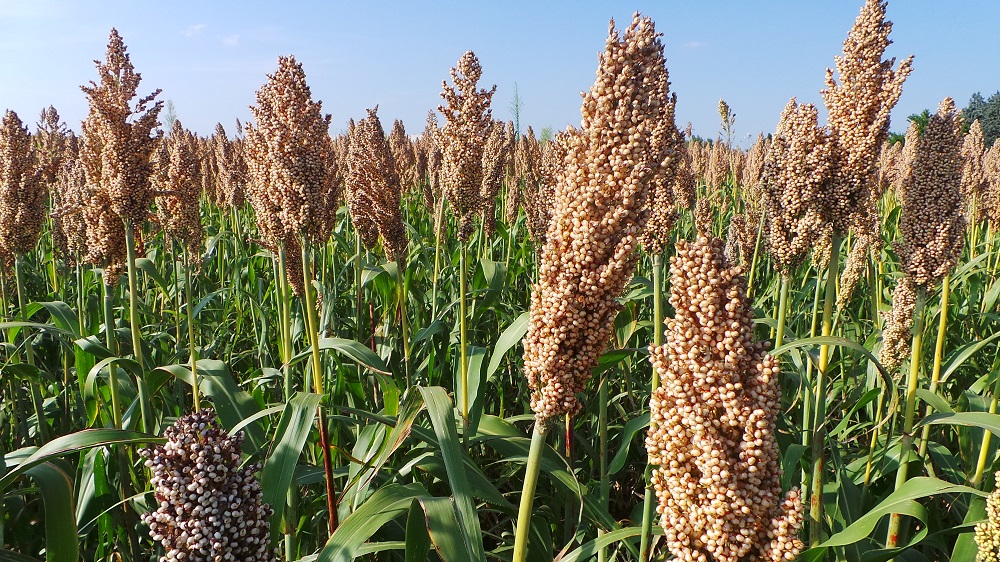Produzione biogas, sorgo batte mais: più rustico, costa meno e fa più metano

Molti agricoltori che hanno installato un impianto di biogas conoscono bene le prerogative del sorgo, coltura da sempre tenuta in scarsa considerazione nel nostro paese. Ma è comunque opportuno rafforzare le virtù di questo cereale, riportando i risultati delle prove condotte dal Cib (Consorzio Italiano Biogas) insieme a Beta, che ha messo a confronto alcuni ibridi di mais con sorghi di varia natura: da granella, da fibra, foraggero e zuccherino.
Le varietà di sorgo i prova sono state le seguenti:
- Da granella: Surgo (Sivam), DSM 26718 (Semfor), Vegga (Novasem), Autan (Sis).
- Foraggeri: Frugal BMR (Semfor), Ensal BMR PS (Semfor), BMR 333 (Sis).
- Da fibra: Hannibal (Kws).
- Zuccherino: Roce (Sis).
Grande variabilità tra i diversi materiali genetici
La produzione media di biomassa è stata pari a 108,4 t/ha e la media di sostanza secca di 27 t/ha, ma la differenza tra le varietà è stata marcata. In particolare:
[row][third_paragraph] [textmarker color=”C0C0C0″]Hannibal[/textmarker] [/third_paragraph][third_paragraph] biomassa 127 t/ha [/third_paragraph][third_paragraph] sostanza secca 39 t/ha [/third_paragraph][/row]
[row][third_paragraph] [textmarker color=”C0C0C0″]Ensal Bmr PS[/textmarker] [/third_paragraph][third_paragraph] biomassa 164 t/ha [/third_paragraph][third_paragraph] sostanza secca 28 t/ha [/third_paragraph][/row]
[row][third_paragraph] [textmarker color=”C0C0C0″]BMR 333[/textmarker] [/third_paragraph][third_paragraph] biomassa 138 t/ha [/third_paragraph][third_paragraph] sostanza secca 31 t/ha [/third_paragraph][/row]
[row][third_paragraph] [textmarker color=”C0C0C0″]Autan[/textmarker] [/third_paragraph][third_paragraph] biomassa 109 t/ha [/third_paragraph][third_paragraph] sostanza secca 27 t/ha [/third_paragraph][/row]
[row][third_paragraph] [textmarker color=”C0C0C0″]Surgo[/textmarker] [/third_paragraph][third_paragraph] biomassa 84 t/ha [/third_paragraph][third_paragraph] sostanza secca 24 t/ha [/third_paragraph][/row]
[row][third_paragraph] [textmarker color=”C0C0C0″]Frugal BMR[/textmarker] [/third_paragraph][third_paragraph] biomassa 114 t/ha [/third_paragraph][third_paragraph] sostanza secca 28,5 t/ha [/third_paragraph][/row]
[row][third_paragraph] [textmarker color=”C0C0C0″]Vegga[/textmarker] [/third_paragraph][third_paragraph] biomassa 79 t/ha [/third_paragraph][third_paragraph] sostanza secca 22 t/ha [/third_paragraph][/row]
[row][third_paragraph] [textmarker color=”C0C0C0″]DMS 26718[/textmarker] [/third_paragraph][third_paragraph] biomassa 85 t/ha [/third_paragraph][third_paragraph] sostanza secca 22 t/ha [/third_paragraph][/row]
[row][third_paragraph] [textmarker color=”C0C0C0″]Roce[/textmarker] [/third_paragraph][third_paragraph] biomassa 71 t/ha [/third_paragraph][third_paragraph] sostanza secca 18 t/ha [/third_paragraph][/row]
Molto interessante il dato che riguarda il potenziale metanigeno dei sorghi, che nella maggior parte dei casi è risultato superiore a quello del mais, con una media di biometano pari a 8.238 Nm3/ha. In particolare:
- Hannibal: 1.2367
- Ensal BMR: 9.217
- BMR 333: 8.873
- Autan: 8.139
- Surgo: 7.889
- Frugal BMR: 7.864
- Vegga: 7.447
- DMS 26718: 7.265
- Roce: 5.076
Conclusioni operative
Dunque la conclusione è che diverse tipologie di sorgo costituiscono una valida alternativa al mais negli areali difficili e meno fertili, che richiedono colture più rustiche e anche meno dispendiose.
Tra tutti i sorghi testati, i sorghi da granella mostrano caratteristiche vicine e a volte superiori al mais, sia come qualità della biomassa che come produzione. Il sorgo da fibra ha confermato grande produttività ma qualche difficoltà alla raccolta per via della taglia molto alta e i sorghi foraggeri sono più suscettibili all’allettamento.



